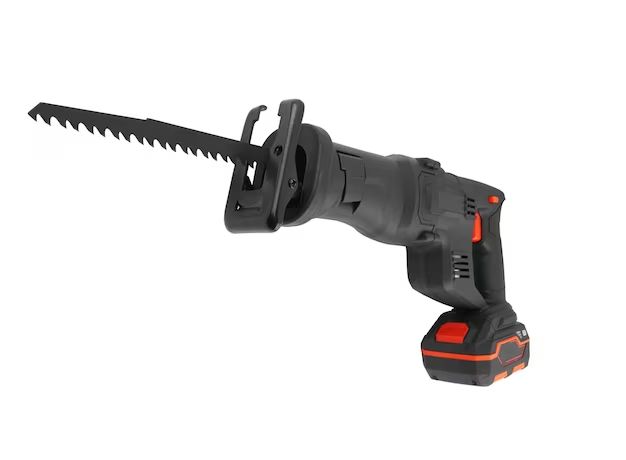When it comes to reciprocating saws, also known as reciprocating saws or sawzalls, one of the most common questions asked is whether all blades fit all saws. The short answer is no, not all blades are universally compatible with all reciprocating saw models. However, there are some general guidelines to follow when selecting replacement blades that can help ensure you get the right fit for your particular saw.
Page Contents
Understanding Reciprocating Saw Blades
Reciprocating saw blades come in a range of styles, sizes, tooth configurations, and shaft types designed for cutting different materials. Here are some of the key factors to consider when choosing blades:
- Blade length – Standard lengths range from 4” to 12”. Longer blades allow you to make cuts in hard-to-reach areas.
- Tooth style – Some common tooth profiles include wood cutting, metal cutting, demolition, etc. The tooth style impacts cutting performance.
- Tooth per inch (TPI) – More TPI generally provides a finer cut, while fewer TPI is better for fast, rough cuts.
- Shaft style – The most common are U-shank and T-shank blades. Make sure to match the shaft to your saw.
- Blade thickness – Thicker blades are stiffer and more durable when cutting tough materials.
Factors That Determine Blade Fit
There are several technical factors that determine whether a particular reciprocating saw blade will fit on a given saw model:
Shaft Type
As mentioned above, the two primary shaft types are:
- U-shank – The blade has a rounded shaft that fits into a clamping jaw on the saw. This is the most common type.
- T-shank – The end of the blade has a T-shaped shaft that slides into a matching T-slot on the saw. T-shank blades are typically used on larger saws.
To work properly, the shaft style must align with the tool’s blade clamp. Most reciprocating saws are designed for U-shank blades.
Shaft Length
In addition to the shaft shape, the length of the shaft must match the saw’s blade holder. Shorter shafts won’t be secured firmly, while longer shafts won’t insert fully into the clamp.
Shaft Diameter
The thickness of the shaft is another consideration. The blade clamp must match the shaft diameter to keep the blade stable during cutting. Thicker shafts are common on larger saws designed for heavy duty use.
Blade Thickness
While the shaft dimensions are critical, blade thickness is also a factor. Most reciprocating saws have a maximum blade capacity. If a blade is too thick, it either won’t fit or will put excessive strain on the saw’s motor and gears.
Blade Length
Finally, blade length must be taken into account. The saw’s stroke length determines how long of a blade it can accommodate. Long blades may come into contact with the saw housing during operation if the stroke is too short.
How to Find the Right Blades
With all these variables, finding compatible reciprocating saw blades can seem daunting. Here are some tips to get the right fit:
- Consult your owner’s manual – The manual will list the recommended blade types, lengths, and other specs for your model.
- Check blade packaging – Reputable blade brands will indicate compatible saw models either on the packaging or product descriptions online.
- Look for reference charts – Some blade manufacturers provide detailed compatibility charts to cross-reference blades and saws.
- Match OEM blades – When in doubt, purchase blades made by your saw’s original manufacturer. They are guaranteed to fit.
- Ask an expert – Talk to staff at your local hardware store or tool shop if you are unsure about matching a blade.
Do DeWalt and Milwaukee Blades Interchange?
DeWalt and Milwaukee are two of the most popular reciprocating saw brands. A common question is whether their blades are interchangeable with each other’s tools.
The answer is sometimes, but not universally. Here are some key points on compatibility:
- DeWalt and Milwaukee saws primarily use U-shank blades. So blade fit is often possible if the length and thickness also match.
- Some DeWalt models like the DWE357 and DWE305 can use certain Milwaukee wood cutting and metal cutting blades.
- Heavy duty Milwaukee blades may be too thick for smaller DeWalt saws not designed for extreme torque.
- Long 12” Milwaukee demolition blades can’t fit on most compact DeWalt saws with shorter stroke lengths.
So while you gain flexibility using blades from both brands, it’s still essential to cross-reference specs for your particular models to ensure a proper fit.
Making a Universal Blade Adapter
If you want even more freedom to use different blade brands with your saw, one option is to purchase or make a universal blade adapter. This consists of a reciprocating saw chuck that allows you to swap out the blade holder portion.
By using an adapter compatible with multiple shaft types, you can get more versatility. For example, you could install a T-shank adapter on a DeWalt saw originally designed for U-shank blades. This expands the range of usable blades.
Some things to keep in mind about universal adapters:
- They add length, so won’t work with longer blades unless you modify the saw housing.
- Adapters may loosen over time, reducing cutting precision.
- Incorrect or loose installation can be unsafe.
- Saw power and performance may be reduced.
So while adapters provide added flexibility, they require proper installation and maintenance to use safely.
Conclusion
While reciprocating saw blades are not universally interchangeable, you can find compatible options by carefully matching shaft style, length, diameter, blade thickness, and stroke length. Consulting manuals, packaging, manufacturer charts, and experts can help guide you to the proper blades.
Brands like DeWalt and Milwaukee have some overlap in certain models, but it’s wise to double check for each saw you own. Adapters allow using a wider array of blades, but require proper installation and care.
Taking the time to get the right blades maximizes the versatility and performance of your reciprocating saw for all your cutting needs.
